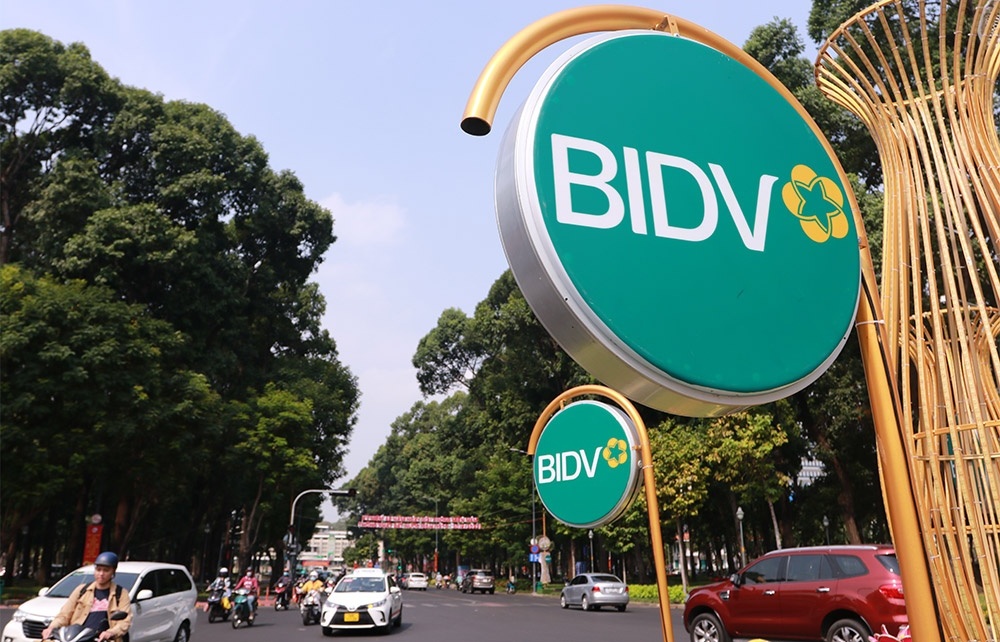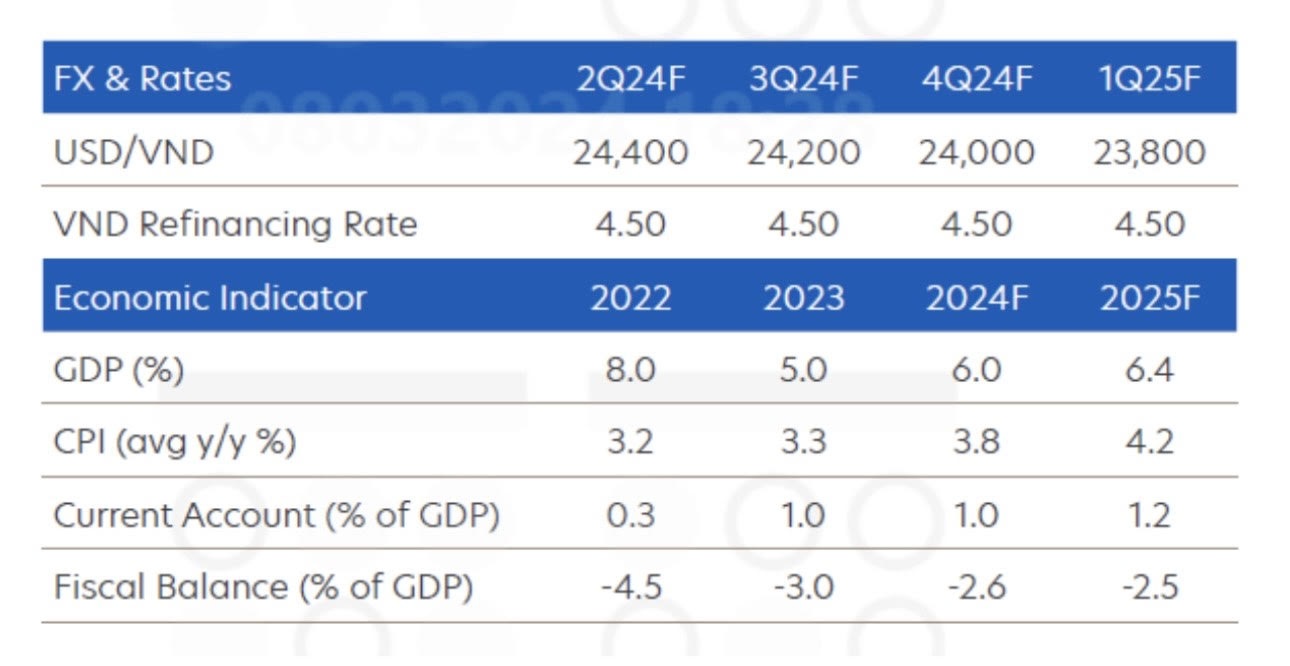Commercial banks' credit growth picture in Q1 through expert lens
What challenges are banks facing in maintaining credit growth?
Credit growth among commercial banks in the first quarter (Q1) of 2024 was slow. As of the end of Q1, credit growth had expanded 0.26 per cent, much lower than the same period last year. Seasonal factors and the credit acceleration at the end of Q4 of last year affected loan performance. Banks face several challenges in sustaining credit growth.
 |
| Le Hoai An |
First is limited credit absorption capacity. Although loose monetary policy and low lending interest rates from the beginning of the year were maintained to support businesses, weak consumer demand and an unstable economic environment have reduced borrowing needs from businesses and individuals, making it difficult for banks to expand credit. This leads to slower credit growth, negatively affecting banks' profitability.
Second is the threat of non-performing loans (NPLs). Maintaining credit growth in the context of increasing bad debt, especially as economic growth slows down, requires banks to carefully consider strategy and risk management. Banks that struggle to manage risks are more susceptible to rising NPLs. This challenge forces bank managers to balance credit growth with maintaining credit quality, otherwise their profits will be heavily impacted.
Third is the unstable business environment. Volatile monetary policy and macroeconomic conditions can hinder banks' ability to forecast and manage risks. This uncertainty about growth and profitability prospects negatively affects bank credit assessment.
What is your assessment of banks' credit growth in Q1?
Banks' risk management strategies have created a divergence in credit growth. Banks with balanced strategies between growth and risk management have secured more stable credit growth than others. Meanwhile, other banks with more conservative strategies have had difficulty maintaining stable credit growth.
The other factor is customer segments. Banks prioritising either corporate or retail lending experienced varying credit growth rates depending on how they exploited the market's potential. Those with strong business networks and adaptability in product offerings were able to achieve higher credit growth. This requires an understanding of customer needs and tailoring products and services accordingly to drive growth.
Can you outline strategies deployed by banks that helped them achieve better credit growth in Q1?
For state-owned banks, credit growth across the whole group was lower than in the same period last year. For instance, BIDV had low growth while Vietcombank posted negative growth. In contrast, Vietinbank's growth rate compared well to the end of 2023 with an increase of 3.7 per cent, thanks to focusing on exploiting the potential demand of existing customer groups.
The group specialising in corporate lending secured the highest growth among banking groups. LPB and OCB were the only banks in the group with better cumulative growth compared to Q1of 2023.
During the period, LPBank loaned out $12.83 billion, growing more than 11.7 per cent compared to the end of Q4, 2023. Banks with strong relationships with the corporate ecosystem such as HDB and TCB showed relatively high cumulative growth rates of 5.8 per cent and 7.8 per cent, respectively. These banks succeeded in exploiting opportunities from the corporate market thanks to changing products and services to adapt to the market.
In contrast, the modest growth numbers at MBB and SSB showed a high level of caution in growth strategies due to concerns that bad debt may continue to surge after credit was strongly disbursed last year.
For the group specialising in retail loans, only ACB and Sacombank maintained better cumulative growth compared to Q1 of 2023. These banks implemented promotions for business.
Accordingly, Sacombank provided a capital package reaching $1.67 billion with interest rates from 3 per cent, per year, while ACB focused on developing the FDI segment and preferential loan packages for green businesses with up to $83.3 million.
Banks specialising in consumer lending such as TPB and VIB had a growth rate of less than 1 per cent due to individual demand for housing loans remaining low. Retail-focused banks have now diverted their focus on corporate lending needs to diversify their loan portfolios, given this low credit demand from households.
Does credit growth have any impact on the stock price performance of banks?
Yes, credit growth may influence bank stock prices. Several factors will shape the trajectory of bank stock prices until the end of 2024, including monetary policy, fluctuating macroeconomic conditions, and banking strategies.
Banks with strong and sustainable credit growth tend to experience positive stock price movements, while those with stagnant or declining credit growth may face downward pressure on their stock valuations.
The stock price performance diversified among different bank groups in Q1.
With state lenders, amidst heightened NPL concerns, banks like BIDV, Vietinbank, and Vietcombank with their cautious risk management approaches and low NPLs had better stock performances, from 20 per cent to 30 per cent higher than the beginning of the year. Strong credit disbursement has become an advantage for Vietinbank compared to other state-owned banks through better availing of their existing customer portfolio.
With corporate lending banks, banks such as LPB and TCB, which successfully implemented customer-centric strategies and product adaptability, experienced positive credit growth and their stock price has increased according.
Stocks like MBB with lower credit growth as well as more debt provision has lower stock price prospects.
As for retail lending banks, this group exhibited greater divergence. Banks like ACB and VIB, with great strength in retail and SME lending, maintained upward stock price momentum. Others, like TPB (facing credit growth challenges) and VPB (struggling with NPL management), saw less lucrative stock price gains.
 | The tools to withstand challenges in credit growth The ability to repay debt and collateral assets is currently a tough landscape. Economist Le Xuan Nghia talked to VIR’s Nhue Man about the prospects of abolishing credit limits in creating economic efficiency. |
 | Banks eye rosier prospects in Q1 The banking sector has witnessed an inspiring profit picture in the first quarter of this year as the economic rebound takes a stronger foothold. |
 | Banks post huge profits despite low credit growth Credit growth throughout the banking sector in the first quarter remained low at 0.26 per cent, but many banks still reported significant profits. |
What the stars mean:
★ Poor ★ ★ Promising ★★★ Good ★★★★ Very good ★★★★★ Exceptional
Related Contents
Latest News
More News
- Shifting customer habits define new banking battleground in the digital age (April 23, 2025 | 11:59)
- Optimism goes on for market status hike (April 23, 2025 | 08:00)
- S&P 500 ends down 2.4% after Trump slams Fed chief again (April 22, 2025 | 11:05)
- Gold hits record, stocks slip as Trump fuels Fed fears (April 22, 2025 | 10:54)
- Several small banks eyeing major exchange listings (April 21, 2025 | 17:27)
- Gold hits record, dollar drops as tariff fears dampen sentiment (April 21, 2025 | 15:11)
- World Financial Innovation Series redefines future of financial services (April 21, 2025 | 10:21)
- Bybit Technology interested in sandbox on crypto assets (April 18, 2025 | 17:34)
- Revitalising and unleashing finance strategy for global green growth (April 18, 2025 | 11:42)
- IFC proposes $60 million global trade finance for Maritime Bank (April 17, 2025 | 15:59)



 Tag:
Tag:




















 Mobile Version
Mobile Version